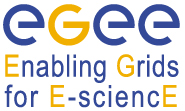Speaker
Describe the activity, tool or service using or enhancing the EGEE infrastructure or results. A high-level description is needed here (Neither a detailed specialist report nor a list of references is required).
ThIS (a Therapeutic Irradiation Simulator) is a software dedicated to the Monte-Carlo simulation of irradiations of living tissues with photons, protons or light ions beams for cancer therapy. It simulates the transport of particles through the patient tissues and computes the dose distribution within the patient’s body from a given set of irradiation parameters. ThIS was designed for cancer treatment planning. For reliable results, a large number of particles have to be simulated.
Describe the added value of the grid for your activity, or the value your tool or service adds for other grid users. This should include the scale of the activity and of the potential user community, and the relevance for other scientific or business applications.
Simulating a large number of particles is computing intensive and may take a very long time if executed on a single processor. For example, we can reach 900 hours of CPU if simulating several hundreds of millions particles. A wider and better usage of ThIS is thus hindered by this long-time response. In order to take full advantage of such a powerful tool for cancer treatment planning, results are needed in a relatively short time. The EGEE Grid computing parallelism allows for important speed-up on the following principle: one complete simulation can be split into sub-simulations with fewer particles and thus less computing intensive that will be executed concurrently on different processors. For example, if we want to simulate 50 M particles, the simulation is divided into 50 sub-jobs, each with 1 M particles to simulate. The condition to observe when splitting one simulation is that each sub-job must use a different random seed number.
Report on the impact of the activity, tool or service. This should include a description of how grid technology enabled or enhanced the result, or how you have enabled or enhanced the infrastructure for other users.
The first impact of the EGEE Grid usage is therefore computational speed-up. However, the grid is also used for input and output data storage. Thus, porting ThIS on the grid made use of a large number of grid services like the Workload Management System for job submission, monitoring and result retrieval or the Data Management System for data storage, transfer and access.
Although the porting process was enhanced by all these grid services, additional ‘adaptability’ measures were needed. First, successful execution was achieved by linking ThIS statically to the necessary libraries as well as by distant node ‘customisation’ before job execution through a shell script. Second, advanced ‘adaptability’ is needed for automatic handling of job splitting and result merging. Last but not least, a high level interface allowing users with no grid specific knowledge to use the available services is essential for opening ThIS to a larger research and medical community.
